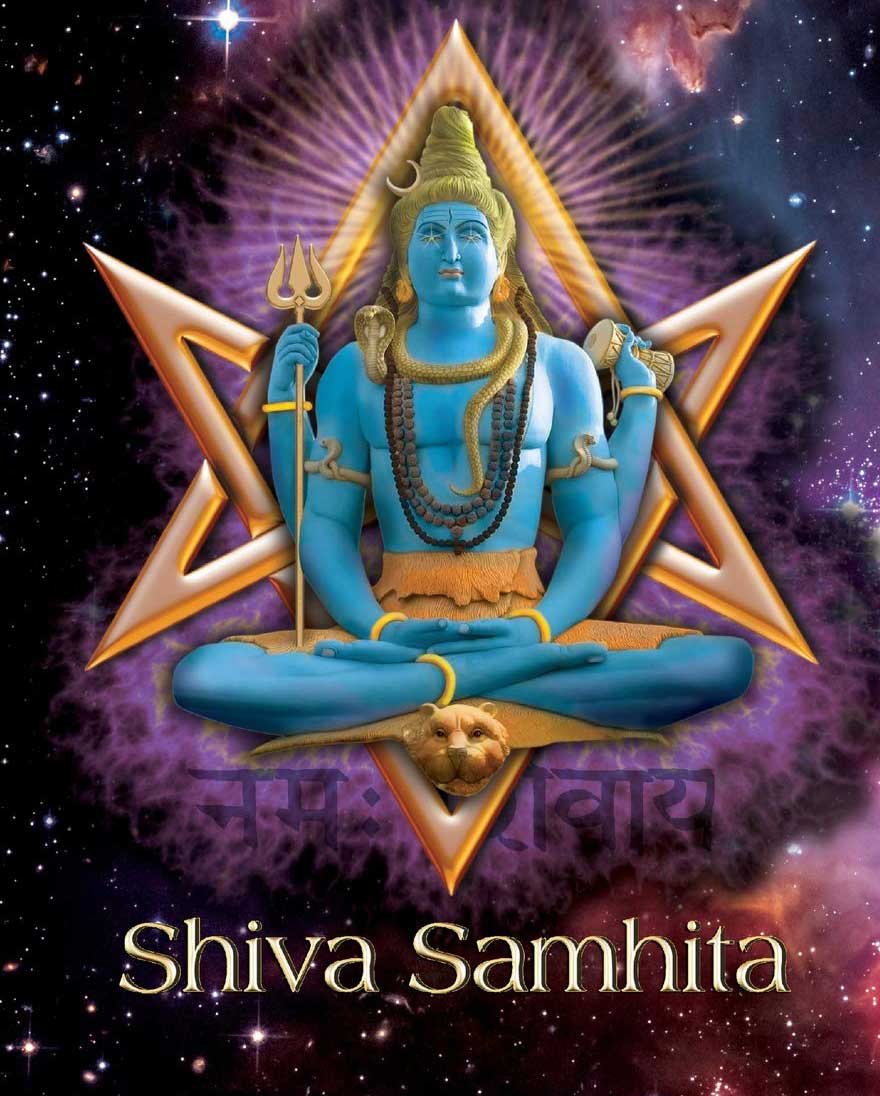
7 Jan 2021 HYN Himalayan Yoga Academy
DEFINITION OF SHIVA SAMHITA
The “Shiva Samhita” is an ancient Sanskrit text about yoga and the aspect of Spiritualism. The name translates to English as “Shiva’s Compendium.”
The author of this text is unknown and the date of its writing is disputed. The most recent examinations have concluded that it was probably written before 1500 C.E. in the Himavat Kshetra (Himalayan Belt) and Mahabharata Hills.
Shiva Samhita in Sanskrit, शिव संहिता was composed more than five centuries ago and is considered a fundamental text of Hatha Yoga. Recording beautiful spiritual teachings found nowhere. Featuring photographs of the asanas and mudras described by the text, the Shiva Samhita is a strongly recommended, core addition to personal, academic, and community library Hinduism Studies, Yoga Studies, and World Religion Studies reference collections and supplemental reading lists.
SHIVA SAMHITA AND ITS MESSAGE
The Shiva Samhita is an ancient sacred text based on Raj Yoga, as seen by the Aadi Yogi or Aadi Natha Shiva. The Samhita serves as the applied yogic text of ultimate truth, guiding the ethical path to unite with the supreme power, not only through realization but also by experiencing the Paramatma (supreme soul) in the state of Samadhi or Yoga. The message was verbally conveyed to the Sages and seers who listened during their state of meditation.
Vedas, and Upanishadas are sources of whole knowledge in all disciplines and discoveries but it gives two central ideas as precious messages to all human beings that are “Satyam vada” and “Dharma chara”. These valuable sentences sort of the ultimate truth of Jnana Yoga, Bhakti Yoga, Kriya yoga, and Raja Yoga as well. Sanatana rite begins from these versions. Satyam Vada expresses to speak truth, to listen the truth and to act the truth. The truth is pervasive, ultimate, universal, non-dual, and classical.
Dharma chara expresses the act of ultimate truth to initiate human ethics and humor (Dharma) and Dharma aims the unification and the realization of the ultimate reality through the act of means and practice. The truth inspires us to achieve the ultimate knowledge from speech, listening, and inner campaign. Truth is the expression but not achievement. We need the act or karma to achieve this. The act for the achievement of ultimate truth is Dharma which is yoga. You will be enriched by this novel here at Himalayan Yoga Academy, Nepal.
SAMHITA AND YOGA
The “Shiva Samhita” is written from the point of view of the Hindu god, Shiva, writing to his consort, Parvati. It is one of the oldest surviving texts based on Hatha yoga and Raja Yoga. It is regarded as being the most complete set of writings on Yogic novels.
The text mentions eighty-four asanas, but only four are described in detail. It also covers five types of prana, meditation, Tantra, mudras, and yogic philosophy. The Shiva Samhita is beautifully written as a conversation between Shiva and Parvati, with Shiva symbolizing the creative and destructive power of the divine masculine, while Parvati represents the gentle, feminine creative power of the universe. The text delves into many esoteric details of Yoga practice, discussing eighty-four asanas, four of which are described in detail, along with the benefits of mantra repetition, Yogic philosophy, five types of prana, tantric practices, and the art of meditation.
ASPECTS OF THE PRACTICE OF YOGA IN SAMHITA
The chapters of the Shiva Samhita cover various aspects of the practice of Yoga. The word “Yoga” means the union of a human soul with the divine. Some of the aspects that are covered in the chapters of the Shiva Samhita are several methods of liberation, eighty-four different asanas , the structure of our 72,864 nadis, types of prana and the awakening of the Kundalini Shakti energy. Additionally, the Shiva Samhita outlines the importance of having a true Guru who can awaken the Kundalini energy safely, as well as describing the subtle body and the movement of prana.
There is an explanation in the Shiva Samhita of hand mudras or sacred gestures, eleven of which may substantially support a Yoga student in reaching liberation. In the text, Shiva also clarifies obstacles that a seeker may encounter on the spiritual path and outlines techniques for working with both those obstacles and our shadow aspects. In addition, the Yoga of sacred sound or Nada Yoga is discussed along with the practice of mantra repetition as Mantra Yoga.
CONCLUSION
The Shiva Samhita is one of three major surviving classical treatises on hatha yoga, the other two being Gheranda Samhita and Hatha Yoga Pradipika. It is considered the most comprehensive treatise on hatha yoga, one that recommends that all householders practice and benefit from yoga. It tends to Raja Yoga in depth. Even though the text discusses many esoteric aspects of practicing Yoga, Shiva himself emphasizes that even an ordinary individual, or family, living in the middle of the maelstrom of the world can benefit from a regular practice of different means of Yoga. Himalayan Yoga Academy is becoming an international commune as a yoga Family with a motive to build human hearts. Here Swami Yog Subodh will surely take the meaning of Shiva Samhita knowledge to your hearts.
